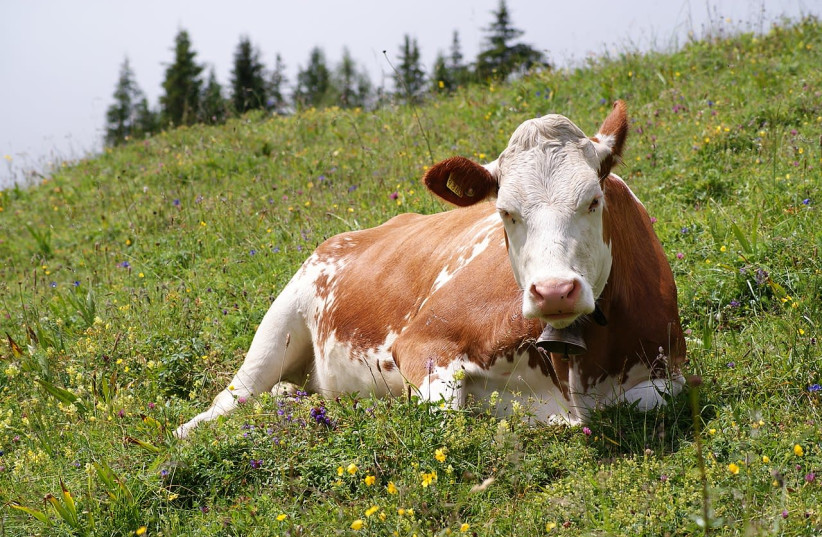Cattle are a major agricultural source of greenhouse gases worldwide – responsible for 50% to 60% of them – due to their diet of hay and grass, which causes flatulence. Methane is about 30 times more potent at heating up the atmosphere than carbon dioxide. Each year, a single cow will belch about 100 kilograms of methane – which is shorter-lived than carbon dioxide but 28 times more potent in warming the atmosphere.
Researchers in Washington State, which – unlike Australia – is not known for its kangaroos, have found that baby kangaroo feces could help provide a solution to the environmental problem of cow-produced methane. A microbial culture developed from the feces was found to inhibit methane production in a cow stomach simulator in a study at Washington State University (WSU).
After researchers added the baby kangaroo culture and a known methane inhibitor to the simulated stomach, it produced acetic acid – the main component of vinegar – instead of methane. Acetic acid, unlike methane, has benefits for cows as it aids muscle growth. The researchers published their work in the journal Biocatalysis and Agricultural Biotechnology under the title “Reducing methane production from rumen cultures by bioaugmentation with homoacetogenic bacteria.”
“Methane emissions from cows are a major contributor to greenhouse gases, and at the same time, people like to eat red meat,” said microbiology Prof. Birgitte Ahring, the corresponding author on the paper and scientist at WSU’s bioproducts, sciences and engineering laboratory. “We have to find a way to mitigate this problem.”
More than half of the methane released into the atmosphere is thought to come from the agricultural sector, and ruminant animals, such as cattle and goats, are the most significant contributors. Furthermore, the process of producing methane requires as much as 10% of the animal’s energy.

Attempts to change their diets
Researchers have tried changing cows’ diets as well as giving them chemical inhibitors to stop methane production, but the methane-producing bacteria soon become resistant to the chemicals. They also tried to develop vaccines, but a cow’s microbiome depends on where it’s eating, and there are far too many varieties of methane-producing bacteria around the world. The interventions can also negatively affect the animals’ biological processes.
The WSU researchers study fermentation and anaerobic processes and had previously designed an artificial rumen, the largest stomach compartment found in ruminant animals, to simulate cow digestion. With many enzymes that are able to break down natural materials, rumens have “amazing abilities,” said Ahring.
Looking to investigate how to out-compete the methane-producing bacteria in their reactor, Ahring learned that kangaroos have bacteria in their foregut that produce acetic acid instead of methane. Her students tracked down some kangaroos, took samples and learned that the specialized acetic acid-producing process occurred only in baby kangaroos. Unable to separate out specific bacteria that might be producing the acetic acid, the researchers used a stable mixed culture developed from the feces of the baby kangaroo.
After initially reducing the methane-producing bacteria in their reactor with a specialized chemical, the acetic acid bacteria were able to replace the methane-producing microbes for several months with a similar growth rate.
While the researchers have tested their system in the simulated rumen, they hope to try it on real cows sometime in the future. “It is a very good culture: I have no doubt it is promising,” Ahring concluded. “It will be really interesting to see if that culture could run for an extended period of time, so we would only have to inhibit the methane production from time to time. Then, it could actually be a practice.”
